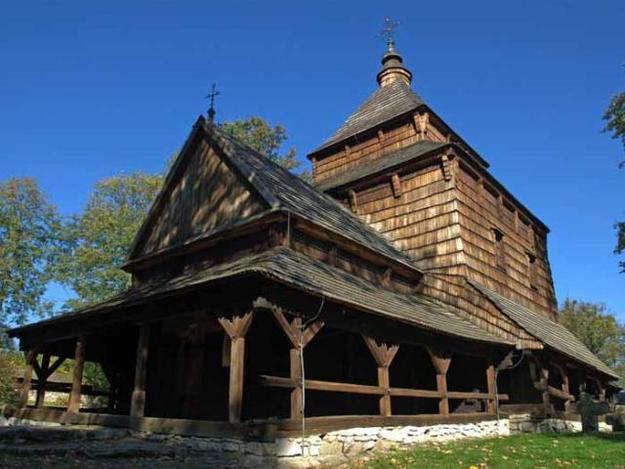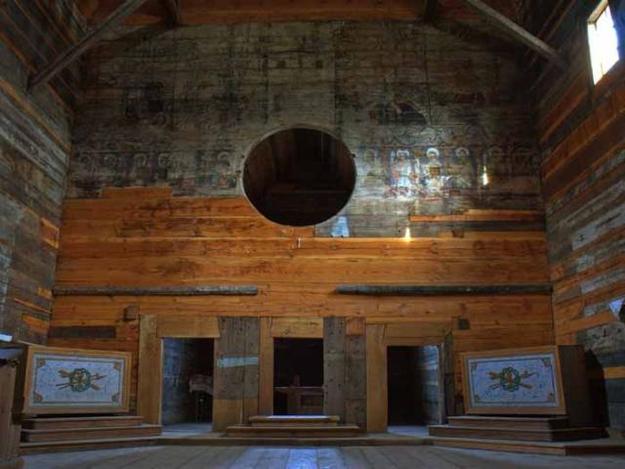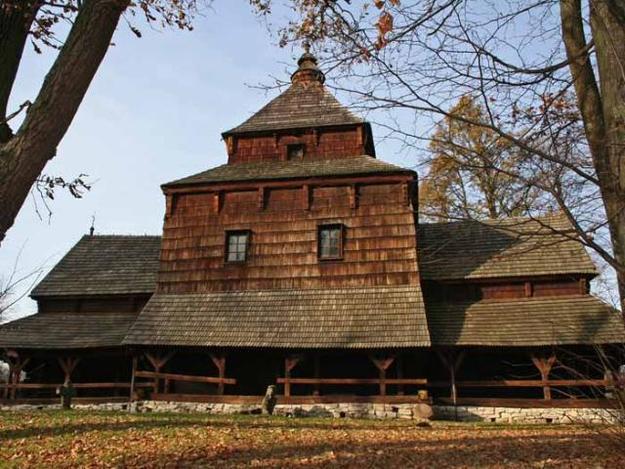St. Paraskewa Church
2012 World Monuments Watch
The late-sixteenth-century Greek Catholic Church of St. Paraskewa is constructed of hewn logs laid horizontally, clad with wooden shingles, and capped with a steeply pitched roof. Made possible by the abundance of high-quality timber in thickly forested regions, these rural wooden churches are widely recognized as important features of Eastern European built heritage, and St. Paraskewa is among the oldest surviving examples. The complex includes the church, its timber bell tower, the stone house of the diak (cantor), an ancient arbor, and an old Ukrainian cemetery, all enclosed by a surrounding stone wall. The compact site served defensive purposes too: the church was frequently used as a refuge by the local population against Tartar attacks in the seventeenth century. There are still visible traces of the marks caused by Tartar axes and sabers. Following World War II, the borders between Poland and Ukraine changed and the Church of St. Paraskewa lost its community and passed into the custody of the Polish state. The church was vacated, but it received landmark protection and was restored in the early 1960s. Visitors today often find the church closed and frequently trespass in their zeal to get close to this monument. The church is in need of renewed stewardship and interpretation. In particular, protective measures against fire and theft would allow valuable treasures such as sacred icons to be returned from a nearby museum, where they are currently stored. The church, along with seven others, is part of a 2010 serial nomination to the Tentative World Heritage List for Poland.
Since the Watch
Following the announcement of the 2012 Watch, the church was completely reshingled with new pine shingles, and a fire-suppression and lightning-protection system were installed. Subsequently, the historic iconostasis, which had been removed from the church, was conserved and reinstalled. Funding for these activities was provided by the Polish Ministry of Culture and National Heritage, the Subcarpathian Province, and the Office of the Subcarpathian Provincial Conservator of Historic Monuments. In 2013, the site was inscribed on the World Heritage List as part of the Wooden Tserkvas of the Carpathian Region in Poland and Ukraine. Efforts continue to conserve two cemeteries that lie outside the enclosure and to refurbish a nearby building for use as a site museum. December 2013
Watch Day 2012
At the St. Paraskewa church Watch Day, local middle-school students created icon paintings and drawings of the site, and performed a reenactment of a local story about the history of the site. A string quartet performance took place inside the church, demonstrating its potential reuse as a cultural venue. Cerkiew w Radrużu - Koncert Kwartetu "Po Trzynastej" On Facebook: Become a fan



